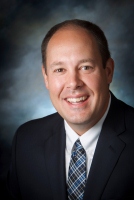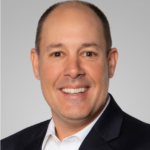This article originally appeared in the January 2016 issue of Smart Business Philadelphia magazine.

Most financial advisors agree that it's never too early to begin saving for retirement, making these problems with active participation in the retirement planning process troublesome.
Increases in mortality, questions surrounding Social Security and increased health care costs are all issues that factor into this discussion, says Roman Leshak, Jr., director of Audit & Accounting at Kreischer Miller.
"Plan sponsors not only want employees to have the financial ability to retire, but also want to avoid limiting individuals from contributing to the plan due to nondiscrimination testing failures," Leshak says. "Educating and encouraging the non-highly compensated portion of plan participants has become more of an emphasis of plan sponsors to increase participates rates."
Smart Business spoke with Leshak about the following strategies that are commonly implemented by plan sponsors to increase employee participation in 401(k) plans.
Auto enrollment
The trend of adding auto enrollment provisions to plans has definitely helped to increase plan participation. Current trends reflect that an increase in the initial new-hire auto enrollment percentages of 6 percent or more has not deterred plan participants. In addition to auto enrollment, re-enrollment has become more common. This is a mechanism by which both current and inactive participants are required to opt out each year or be re-enrolled at the standard percentage each subsequent year.
Auto escalation
Many plans have enhanced their auto enrollment provisions to include auto escalation provisions that increase participant contributions at a rate of 1 percent a year up to a maximum as described in the plan document. Many plans are implementing this strategy and capping the increase as high as 10 to 12 percent to help employees save for their retirement by increasing contributions as they receive pay raises.
Stretch match
A more strategic option is to extend the matching contribution limit to encourage participants to contribute more of their compensation. In place of a dollar-for-dollar match, employers are now matching 25 percent or 50 percent of a higher contribution number in order to drive not only participation, but the level of participation of current employees.
Research has shown that participants will typically contribute up to the matching limits to take advantage of the "free money" provided by the employer in the form of matching contributions. Increasing matching provisions to 25 percent of up to 12 percent of compensation encourages participants to defer more of their own money to get the same match as the dollar-for-dollar options, yet costing the employer the same amount.
Shortened waiting periods
Enrollment waiting periods continue to be shortened to help increase participation of new hires and the one year of service requirement are becoming more uncommon. Plan sponsors recognize the importance of providing the opportunity to their younger employees to begin participation so they contribute to the plan over their entire career.
Plan sponsors constantly struggle with increasing plan participation rates and the strategies discussed above are the most common current trends being implemented to bridge the retirement gap. Educating plan participants at all levels of the organization and providing constant information is still of primary importance to increase and maintain plan participation.
Roman Leshak can be reached at Email or 215.441.4600.
Related:

